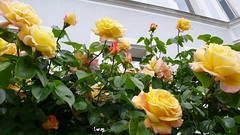End-of-Summer Pruning: Preparing Trees and Shrubs for Fall
While it may seem that landscaping Beaverton, Portland, and other perpetually green locales would b e a year-round job, the truth is that certain months of the year are very quiet from a landscaping perspective. August, for instance, is a time to put lawn care maintenance on hold, since most plants, including grass, enter their dormant season during the hottest time of the year.
e a year-round job, the truth is that certain months of the year are very quiet from a landscaping perspective. August, for instance, is a time to put lawn care maintenance on hold, since most plants, including grass, enter their dormant season during the hottest time of the year.
However, August is also one of the most beautiful months in many Pacific Northwest gardens, landscaping enthusiasts often use this time to plant (and consistently water) new shrubs and trees. August is also a good time to begin pruning services, which will extend into the fall. The following explains how to conduct pruning in late summer. (Remember that location is always key in landscaping; Beaverton-area gardeners can follow these tips exactly, while other parts of the Northwest may need to adjust for seasonal weather differences.)
Late Summer Pruning Services: Landscaping Beaverton and the Portland Metro Area
Remove dead wood. This can be done at any time of year.
Thin crowded trees and shrubs. Healthy plants need good circulation at their hearts; otherwise, they are more susceptible to disease. August is a good time to thin out trees and shrubs of both deciduous and evergreen varieties. You can also shape the plant with gentle pruning. Twiggy summer growth on osmanthus and yews can be trimmed and shaped at this time, for instance.
Avoid pruning spring-flowering species. Pruning plants is like giving a haircut – it causes much less heartache to take more off later than to take too much off right away. Therefore, be cautious in your pruning. Do not prune spring-flowering plants like azaleas, rhododendrons and forsythia. These plants form their spring buds in late summer, so if you prune them back now you will be limiting (or completely preventing) spring blossoms next year.
Prune roses to 5-leaf groupings. Pruning services often recommend pruning roses in the late summer, since rosebushes can usually produce one more round of flowers before temperatures drop in late October. Remove dead canes, crossing canes and suckers. For canes that you want to blossom this fall, cut back to groups of five leaves. Alternatively, you may choose to just leave your roses alone. If you stop deadheading and pruning altogether, you’ll allow the bush to produce hips and slow down growth in preparation for winter.
August is also a good time to rake away any dead leaves; this is one aspect of lawn care maintenance that should be kept up in the dog days of summer as well as throughout the fall.
[Photo by: chrisbulle, via CC License]
